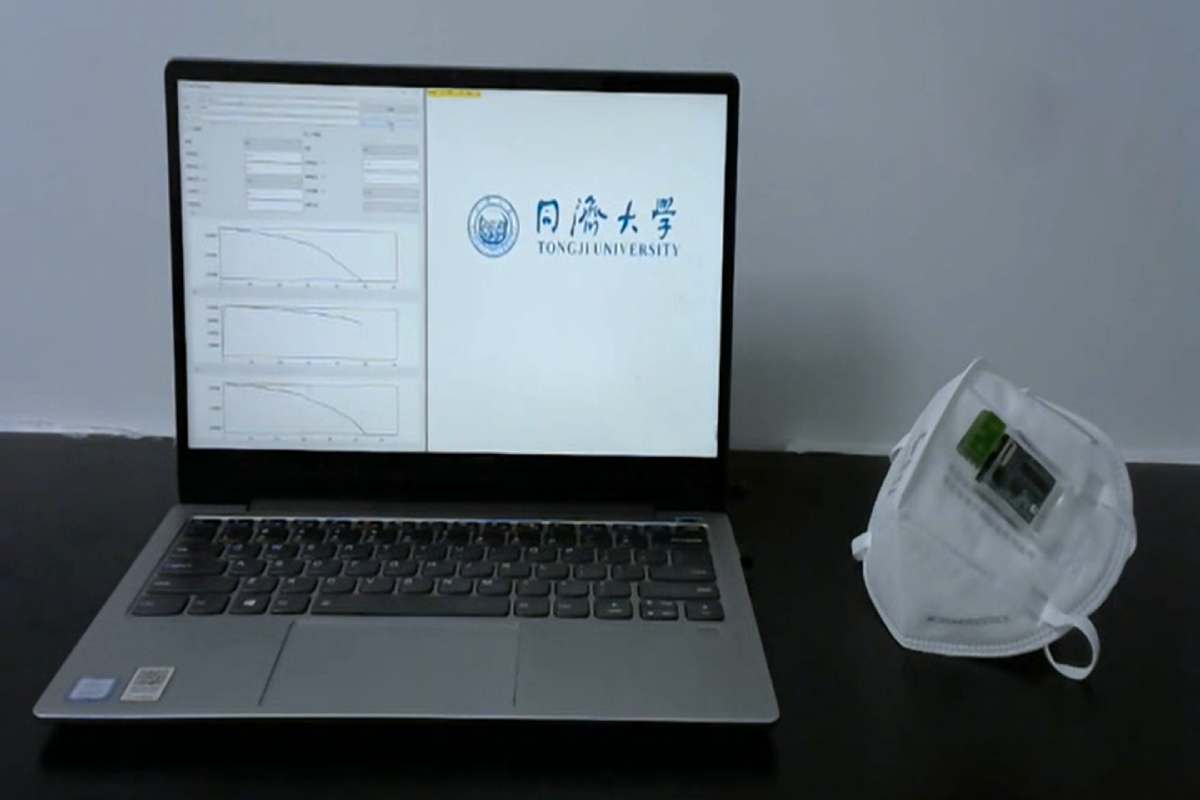The highly sensitive mask can alert wearers via their mobile devices within 10 minutes if targeted pathogens are present in the air.

Chinese Scientists have created a face mask that can detect common respiratory viruses, including influenza and COVID-19, in the air in droplets or aerosols. (Supplied)
Chinese Scientists have developed a face mask that can detect common respiratory viruses, including those of influenza and Covid-19, if they are present in the air in droplet or aerosol form.
According to the study that has been published in the journal Matter, the highly sensitive mask can alert the wearers via their mobile devices within 10 minutes if targeted pathogens are present in the surrounding air.
“Previous research showed facemask-wearing can reduce the risk of spreading and contracting diseases. So, we wanted to create a mask that can detect the presence of viruses in the air and alert the wearer,” said Yin Fang, author and a material scientist at Shanghai Tongji University in a statement.
Respiratory pathogens that cause Covid-19 and H1N1 influenza spread through small droplets and aerosols released by infected people when they talk, cough, or sneeze. These virus-containing molecules — especially tiny aerosols — can remain suspended in the air for a long time.
Fang and his colleagues tested the mask in an enclosed chamber by spraying liquids and aerosols containing viral proteins on the mask. The sensor responded to as little as 0.3 microlitre of the liquids, which is about 70-560 times less than the volume of liquids produced in one sneeze and much less than the volume produced by coughing or talking.
The team designed a small sensor, which in this case is a type of synthetic molecule that can identify unique proteins of pathogens, like antibodies.
It then modified this multi-channel sensor with three types of aptamers, which can simultaneously recognise surface proteins on Sars-CoV-2, H5N1, and H1N1.
Once the aptamers bind to the target proteins in the air, the ion-gated transistor — a novel type of device that is highly sensitive — amplifies the signal and alerts the wearers via their phones.
The mask can detect even trace levels of pathogens in the air within 10 minutes.
“Our mask would work really well in spaces with poor ventilation, such as elevators or enclosed rooms, where the risk of getting infected is high,” Fang said.
In future, if a new respiratory virus emerged, the team could easily update the sensor’s design for detecting the novel pathogens, he added.
Next, the team hopes to shorten the detection time and further increase the sensitivity of the sensor by optimising the design of the polymers and transistors.
They are also working on wearable devices for a variety of health conditions including cancers and cardiovascular diseases.
“Currently, doctors have been relying heavily on their experiences in diagnosing and treating diseases. But with richer data collected by wearable devices, disease diagnosis and treatment can become more precise,” Fang said.

Apr 24, 2024

Apr 24, 2024

Apr 23, 2024

Apr 23, 2024

Apr 23, 2024

Apr 22, 2024